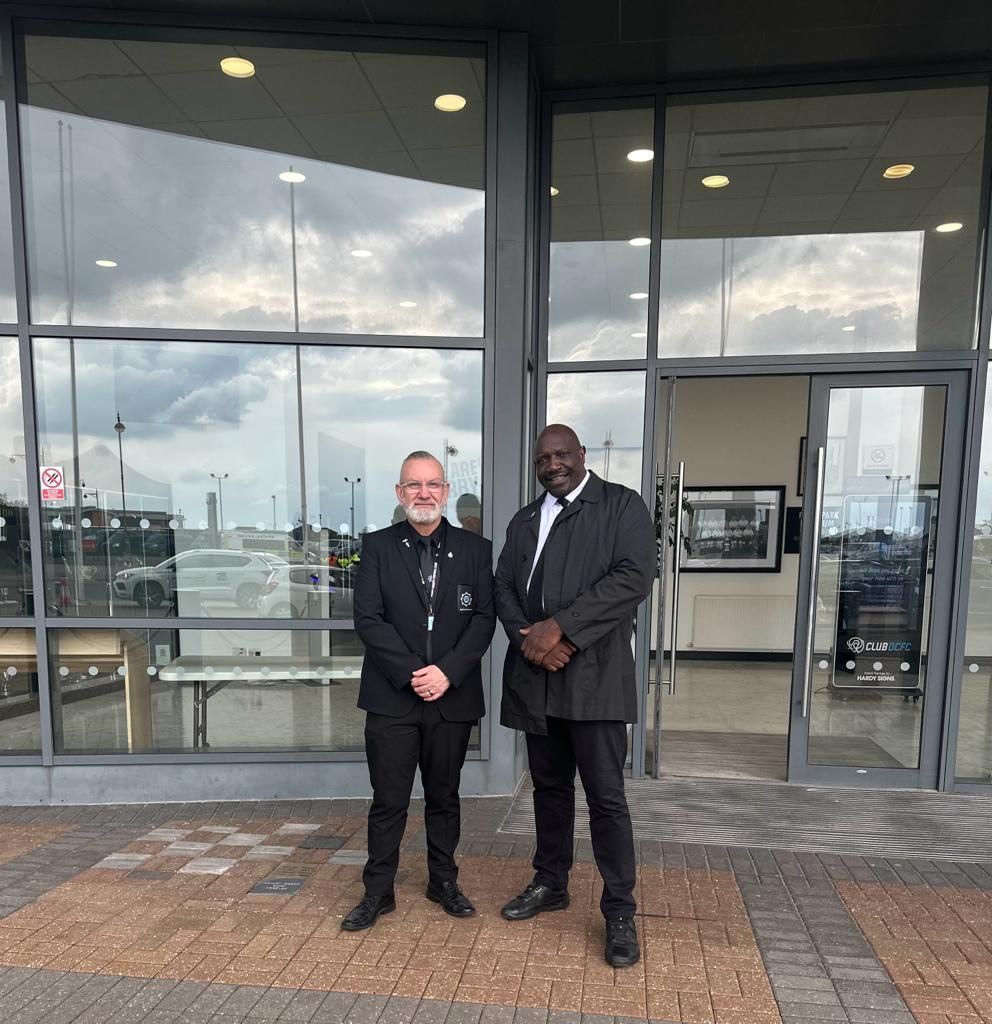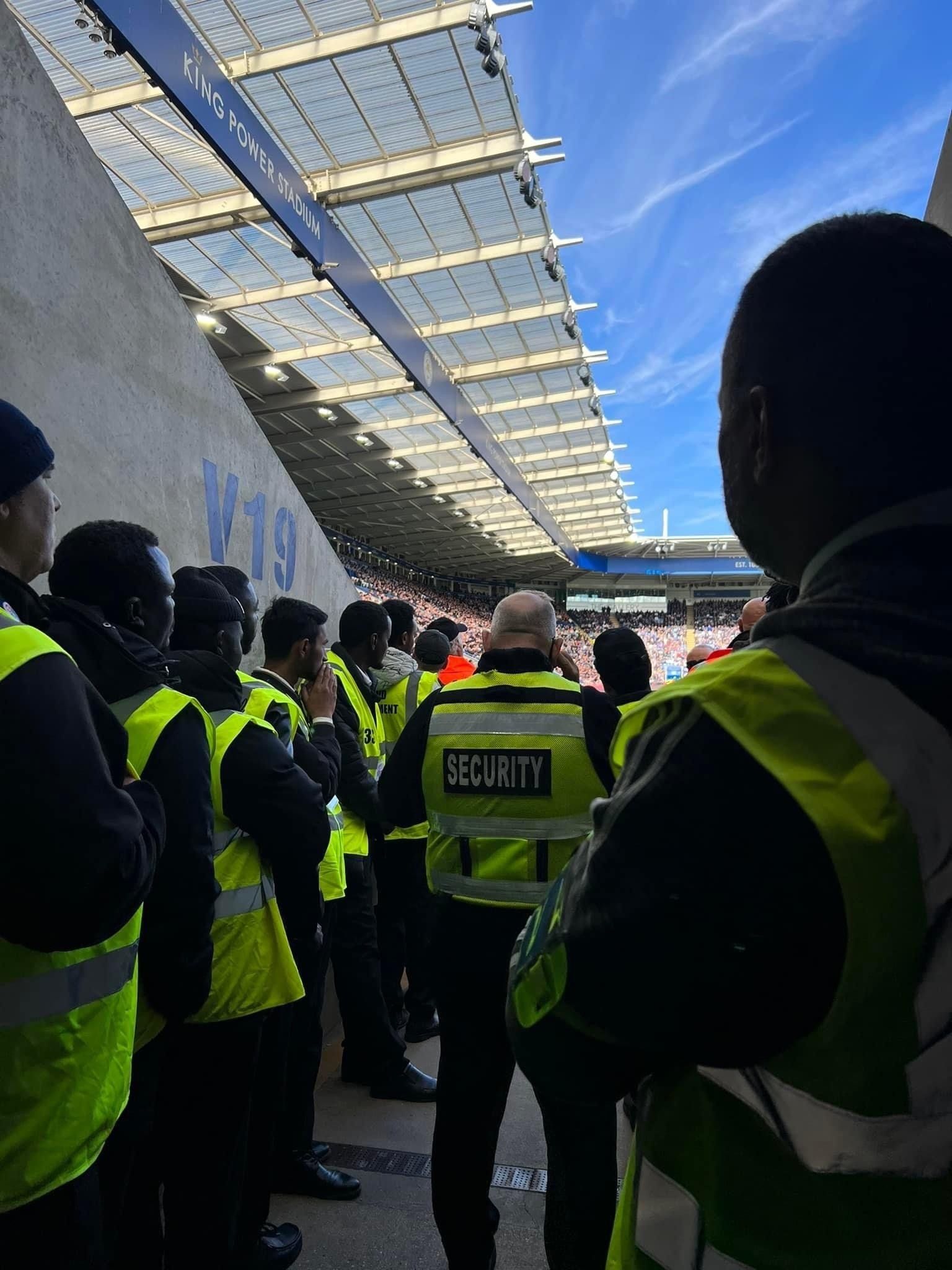How to Ensure Top-notch Event Security for a Successful Gathering
Planning an event is akin to orchestrating a grand symphony, where each element plays its part to create a harmonious whole. The crescendo of anticipation builds as the day of the gathering approaches, but one element must remain steady and unwavering – security. Ensuring top-notch security is not just about locking doors and posting guards; it's about creating an environment where attendees feel safe and can fully engage in the experience. As an event planner, the responsibility of managing security can seem like a mammoth task, but with the right strategies, you can orchestrate a successful and secure gathering.
Have you ever wondered what it truly takes to safeguard an event from start to finish? Let's dive into the intricacies of event security and uncover the strategies that guarantee peace of mind for both organisers and attendees.
Event Control Strategies
In the bustling world of event management, control is your most trusted ally. It starts with a well-laid plan that acts as the backbone of your event. As an event organiser, you must craft a strategy that leaves no stone unturned, ensuring every aspect of security is covered. From the moment the idea takes shape to the final farewell, control is key.
Begin by establishing clear objectives for your event. These objectives will serve as the guiding light for all your security measures. Whether it's a corporate conference or a music festival, understanding what you aim to achieve helps in crafting a security plan that aligns with your goals. For instance, if the objective is to create a family-friendly environment, your security measures might focus more on accessibility and crowd comfort.
Next, develop a detailed plan that covers every aspect of the event. This includes everything from entry protocols to emergency response procedures. As a coordinator, you’ll want to ensure that every team member understands their roles and responsibilities.
Clarity in these roles helps avoid confusion and ensures a smooth operation. Regular meetings with stakeholders will keep everyone aligned and informed about the security protocols in place.
Communication is the lifeblood of effective event management. Prioritise open communication channels among your team to facilitate seamless coordination. Use technology to monitor and manage logistics efficiently. Applications and software designed for event management can provide real-time updates and help you keep track of various elements such as attendee numbers, security personnel deployment, and emergency situations.
Regular meetings are crucial to keeping everyone on the same page. These gatherings are opportunities to discuss potential issues and strategise solutions. Make it a point to align all stakeholders on the security protocols, ensuring that everyone knows the plan and their part in executing it. This level of preparedness can make a significant difference in the event's overall success.
Security Measures
When it comes to security measures, an ounce of prevention is worth a pound of cure. The essence of event security lies in the details, from the personnel you employ to the technology you deploy. Each element plays a vital role in crafting a safe and secure environment for your attendees.
Start with thorough background checks on all personnel involved in the event. This includes not only the security teams but also volunteers and temporary staff. Ensuring that everyone working on the event has been vetted can prevent security breaches and incidents. It’s not just about trust; it’s about creating a secure foundation for your event.
Implement physical barriers to control access points. These barriers can range from simple cordons to sophisticated turnstile systems that regulate who enters and exits. By controlling these access points, you can effectively manage the flow of people and minimise the risk of unauthorised entries. This is particularly crucial for larger events where the risk of trespassers is higher.
Deploy surveillance systems to maintain a vigilant eye over the venue. Cameras placed strategically can monitor high-traffic areas and potential risk zones continuously. These systems provide an extra layer of security and help security personnel respond quickly to any irregularities or incidents.
A strict entry policy is non-negotiable. Security personnel should enforce this policy rigorously to maintain safety standards. This includes checking identification, scanning tickets, and possibly conducting bag checks. While it may seem excessive, these measures can deter potential threats and reassure attendees of their safety.
Conduct regular patrols to detect and address potential threats. Security teams should be visible and active, patrolling the venue to keep an eye on the crowd and identify any suspicious activity. This proactive approach can help neutralise risks before they escalate into serious problems.
Crowd Control Techniques
Managing a crowd is like conducting an orchestra – you need precision, timing, and the ability to adapt to changing dynamics. Crowd control techniques are essential in maintaining safety and ensuring that your event goes off without a hitch.
Effective signage is your first line of defence. Design signs that are clear and easy to understand, guiding attendees throughout the venue. Signage should indicate exits, facilities, and key locations, helping attendees navigate without confusion. This not only aids in crowd management but also enhances the overall attendee experience.
Create designated entry and exit points to streamline crowd flow. By clearly marking these areas, you can reduce bottlenecks and prevent overcrowding. This is especially important in emergencies, where quick and orderly evacuation is paramount.
Employ barriers and fencing to direct and control movement. These physical barriers can help section off areas, guide attendees along specific paths, and prevent unauthorised access. They act as both a physical and psychological deterrent, guiding people where they need to go.
Train your staff on de-escalation techniques to handle disruptions calmly. Whether it’s a minor disagreement or a larger disturbance, having trained personnel who can defuse situations is invaluable. Their ability to maintain order and calm amidst chaos can prevent situations from spiralling out of control.
Use loudspeakers to communicate important information to attendees. Whether it's a change in schedule or an emergency announcement, having a reliable communication system in place ensures that your message reaches everyone quickly and effectively. This kind of communication can be the difference between chaos and order in a critical situation.

Team Management
Your team is the heart of your security operation, and managing them effectively is crucial to your event’s success. From selecting the right personnel to maintaining open lines of communication, team management requires both strategy and empathy.
Choose skilled personnel to ensure competent security coverage. When selecting your team, consider their experience and expertise in handling events similar to yours. A well-rounded team with diverse skills can cover more ground and respond to a variety of situations.
Conduct training sessions to familiarise your teams with security protocols. Regular training ensures that everyone is up-to-date with the latest security measures and knows exactly what to do in different scenarios. This preparedness boosts confidence and efficiency among team members.
Allocate roles and responsibilities to maximise efficiency. By clearly defining what is expected of each team member, you can ensure that tasks are completed efficiently and effectively. This clarity also helps prevent overlaps and gaps in coverage, which can be detrimental to security.
Maintain constant communication with all team members. Use radios, mobile apps, or other communication tools to keep everyone connected. This constant line of communication allows for quick dissemination of information and ensures that everyone is aware of any changes or developments.
Implement a feedback system to improve team performance continuously. After the event, gather feedback from your team to identify areas for improvement. This feedback is invaluable for refining your strategies and ensuring that your team performs even better in future events.
Risk Assessment
Risk assessment is the compass that guides you through the uncertainties of event planning. By identifying potential risks and preparing for them, you can navigate the choppy waters of event management with confidence.
Identify potential risks and evaluate their impact on the gathering. Consider all aspects of your event, from the venue to the attendees, and identify what could go wrong. This proactive approach helps you anticipate problems before they arise.
Develop
contingency plans to address each identified risk effectively. For every potential risk, have a corresponding plan that outlines how to mitigate it. These plans should be detailed and cover all possible scenarios, ensuring that you’re prepared for anything.
Assess the venue for vulnerabilities that could compromise security. Walk through the venue with a critical eye, looking for areas that could pose security risks. This might include poorly lit areas, unsecured access points, or insufficient exits.
Consult with security experts to enhance your risk assessment procedures. Bringing in professionals with experience in event security can provide insights that you might not have considered. Their expertise can help you refine your strategies and enhance your overall security plan.
Review and update your risk management strategies regularly. As the event approaches, new risks may emerge, and existing plans may need adjustment. Regular reviews ensure that your strategies remain relevant and effective, keeping your event safe and secure.
Control Room Setup
The control room is the nerve centre of your event, where all information converges for analysis and action. Setting up an effective control room is crucial to maintaining oversight and responding quickly to any issues.
Select a strategic location for the control room to oversee the event. The location should provide easy access to all key areas of the venue and be centrally located. This positioning allows for efficient communication and coordination with all teams.
Equip the control room with the necessary technology for surveillance. This includes monitors, communication equipment, and software that allows you to track various aspects of the event. Having the right tools at your disposal ensures that you can monitor the event efficiently.
Security personnel should monitor all feeds and communications from the control room. This constant vigilance allows for quick responses to any incidents or emergencies. By having a dedicated team in the control room, you can ensure that no detail goes unnoticed.
Ensure that the control room has a clear line of sight to key areas. This visibility allows for better monitoring and quicker responses to any issues that arise. If the control room is not in a location with a direct line of sight, use cameras to ensure comprehensive coverage.
Allocate experienced staff to operate and manage the control room efficiently. These individuals should be well-versed in the technology and procedures in place, ensuring that the control room runs smoothly and effectively throughout the event.
Time Management
In the fast-paced world of event planning, time is a precious commodity. Effective time management ensures that every aspect of your event is executed flawlessly and on schedule.
Create a detailed schedule to allocate time effectively. This schedule should include all tasks, from setup to teardown, and allocate specific times for each. By having a clear timeline, you can ensure that everything runs smoothly and on time.
Set clear deadlines for each task to ensure timely completion. Deadlines create a sense of urgency and help your team stay focused on their tasks. Regularly check in with your team to ensure that these deadlines are being met and adjust as necessary.
Prioritise tasks based on their importance to maintain focus. Not all tasks are created equal, and some will require more time and resources than others.
By prioritising these tasks, you can ensure that critical elements are completed first and to the highest standard.
Conduct regular check-ins to track progress and adjust timelines. These check-ins allow you to assess how your event is progressing and make any necessary adjustments to your schedule. This flexibility is crucial in ensuring that the event stays on track.
Anticipate potential delays and prepare alternatives to minimise disruption. No matter how well you plan, unexpected issues can arise. By having contingency plans in place, you can quickly address these issues and keep the event running smoothly.
Overcoming Challenges
Challenges are an inevitable part of event planning, but with the right approach, they can be overcome. By preparing for potential obstacles and maintaining a flexible mindset, you can navigate these challenges with ease.
Identify potential challenges and develop proactive solutions. Consider all aspects of your event and identify where issues might arise. By anticipating these challenges, you can develop strategies to address them before they become problems.
Maintain flexibility to adapt to unexpected situations swiftly. Events are dynamic, and things can change in the blink of an eye. By staying flexible and open to change, you can adapt quickly and effectively.
Encourage open dialogue to foster a problem-solving mindset. Create an environment where your team feels comfortable discussing challenges and proposing solutions. This open communication can lead to innovative solutions and a more resilient team.
Utilise resources efficiently to address challenges without delay. Whether it’s personnel, equipment, or time, use your resources wisely to address challenges as they arise. Being resourceful can help you overcome obstacles and keep your event on track.
Review past events to learn from challenges and improve future strategies. Every event is a learning opportunity, and by reflecting on past challenges, you can improve your strategies for future events. This continuous improvement ensures that your events are always getting better and more secure.
In conclusion, ensuring top-notch event security requires a holistic approach that encompasses everything from planning and team management to risk assessment and crowd control. By following these strategies, you can create a safe and successful gathering that leaves attendees with nothing but fond memories.
Frequently Asked Questions
What is a controlled event?
A controlled event is one where security measures are in place to regulate access, monitor activities, and respond to any emergencies swiftly to maintain a safe environment for all participants.
What are the 5 C's of event planning?
The 5 C's of event planning are Concept, Coordination, Control, Culmination, and Closeout. These elements are crucial for ensuring a successful event by focusing on the overall vision, organization, execution, and evaluation of the gathering.

All Rights Reserved | Sams Event Control Ltd




